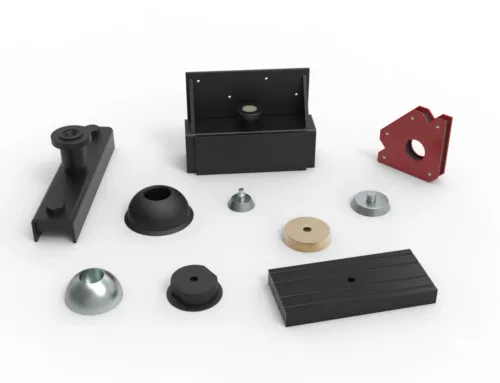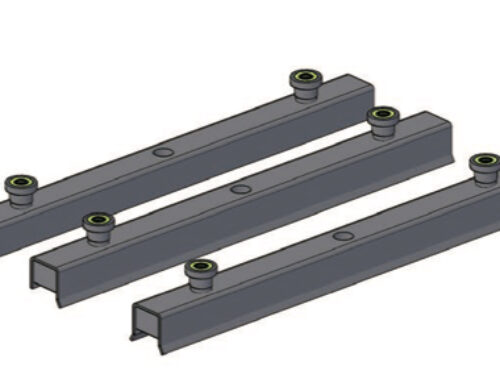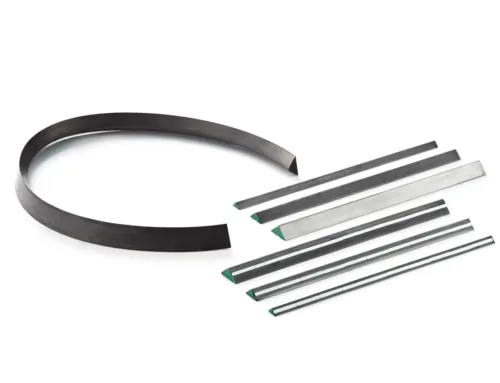The world of wearable technology is evolving fast, and magnetic components for wearables are at the heart of this revolution. Whether it’s smartwatches, health monitors, or AR devices, these tiny magnetic parts enable powerful sensing, efficient power management, and seamless connectivity—all in compact, durable forms. If you’re designing or sourcing cutting-edge wearable tech, understanding the essentials and innovations behind magnetic components is key. Here, we’ll break down what you need to know and why NBAEM’s expertise makes a difference in powering the future of wearables. Let’s get started.
Understanding Magnetic Components in Wearables
Have you ever wondered how wearable devices like fitness trackers or smartwatches manage power, sense movement, or maintain wireless connections? The answer often lies in their magnetic components. These parts use magnetic fields to perform essential functions, making wearables smaller, smarter, and more efficient.
Magnetic components are elements that rely on magnetism to work. At their core, they involve materials that generate or respond to magnetic fields, helping in energy storage, signal filtering, or sensing.
Common Magnetic Components in Wearables
- Magnets: Provide magnetic fields for sensors or holding parts in place.
- Inductors and Coils: Store and transfer energy in circuits, critical for power management.
- Magnetic Sensors: Detect magnetic fields to sense motion or position, including Hall effect sensors.
- Hall Effect Sensors: Measure magnetic fields and convert them into electrical signals, often used for proximity or speed sensing.
- Reed Switches: Small switches activated by magnetic fields, useful for detecting open or closed states without physical contact.
- EMI Filters: Shield devices from electromagnetic interference, ensuring cleaner signals and stable performance.
Role of Magnetic Components in Wearables
These components play key roles in several wearable functions:
- Power Management: Inductors and coils help regulate voltage and manage battery power efficiently.
- Connectivity: Magnets and EMI filters maintain stable wireless signals by reducing noise and interference.
- Sensing: Magnetic sensors and Hall effect devices monitor movements, heart rate, and environmental conditions with high precision.
Understanding these basic principles helps clarify why magnetic components are critical in making wearables reliable, energy-efficient, and responsive to users’ needs.
Key Applications of Magnetic Components in Wearable Devices
Magnetic components play a vital role in many popular wearable devices used daily in the U.S. Here’s where you’ll find them making a difference:
-
Health Monitoring Devices
Magnetic sensors are essential in heart rate monitors and glucose sensors, offering precise data for real-time health tracking. These components help deliver reliable readings without adding bulk, essential for comfortable wear.
-
Fitness Trackers and Smartwatches
Miniature inductors and coils support power management and wireless communication in fitness trackers and smartwatches. Their compact size and efficiency make sure your device runs longer and stays connected seamlessly.
-
Augmented Reality Glasses and Smart Textiles
Magnetic coils and sensors enable smooth interaction in AR glasses, detecting movement and orientation. In smart textiles, flexible magnetic materials allow wearable tech to integrate naturally into clothing without sacrificing comfort or style.
-
Hearing Aids and Medical Wearables
Rare earth magnets and magnetic filters improve signal clarity and reduce electromagnetic interference in hearing aids. In other medical wearables, these components ensure accurate sensing and long-lasting, low-power operation.
These applications underscore why selecting the right magnetic components is crucial for reliable, efficient wearable technology designed for everyday use. For more on magnetic fundamentals, see our page on magnetic moments.
Benefits of Using Magnetic Components in Wearables
Magnetic components play a key role in making wearables practical and efficient. Here are the main benefits they bring to the table:
Compact Size for Miniaturized Devices
Wearables demand small, lightweight parts, and magnetic components like miniature inductors and coils fit perfectly. Their compact form helps keep devices sleek and comfortable without sacrificing performance.
Low Power Consumption and High Efficiency
Magnetic parts are great at managing power. They enable efficient energy use, helping wearables run longer on limited battery life — a big deal for fitness trackers and health monitors.
Reliable Wireless Communication and Data Transfer
Magnetic sensors and EMI filters improve wireless signals and reduce interference. This ensures smooth, stable connections for syncing data or streaming info, which is vital for smartwatches and augmented reality glasses.
Enhanced Sensing Accuracy and Device Durability
Using Hall effect sensors and other magnetic components boosts the precision of health monitoring and fitness tracking. They also add durability, making devices more resistant to shocks and daily wear.
| Benefit | Impact on Wearables | Common Components Involved |
|---|---|---|
| Compact Form Factors | Fits in small, lightweight devices | Miniature inductors, coils |
| Low Power and High Efficiency | Longer battery life, less heat | Magnetic coils, filters |
| Reliable Wireless Connectivity | Strong, stable data transfer | EMI filters, magnetic sensors |
| Enhanced Accuracy and Durability | Precise sensing and lasting gear | Hall effect sensors, rare earth magnets |
These benefits make magnetic components essential for today’s wearables, especially in the US market where users expect both high performance and convenience in everyday tech.
Design Considerations and Challenges for Magnetic Components in Wearables
When designing magnetic components for wearables, several key challenges come up that impact performance and user comfort.
Size Constraints and Miniaturization Techniques
Wearables demand tiny, lightweight parts to fit sleek, compact designs. This means magnetic components like miniature inductors, coils, and sensors must be downsized without losing efficiency. Techniques such as advanced winding methods and using high-permeability materials help keep components small while maintaining magnetic strength.
Magnetic Interference and Noise Reduction
Magnetic interference is a big issue in close-packed wearable devices, affecting sensor accuracy and wireless communication. Effective EMI filters and magnetic shielding play a crucial role in reducing noise. Careful circuit layout and incorporating Hall effect sensors or reed switches with built-in noise resistance help keep signals clean.
Material Selection for Flexibility and Biocompatibility
Since wearables often touch or attach to skin, flexible magnetic materials and biocompatible coatings are essential. Materials like flexible printed magnets or soft ferrites allow components to bend with body movement. Choosing non-toxic, skin-friendly materials ensures comfort and safety during prolonged wear.
Thermal Management in Wearable Environments
Wearables operate close to the body where heat can build up quickly. Magnetic components must handle temperature changes without degrading. Using heat-resistant materials, optimizing power consumption, and designing for good heat dissipation keep devices reliable and comfortable.
By addressing these areas, we ensure magnetic components meet the unique demands of wearable tech, delivering performance without compromising user experience.
Innovations and Trends in Magnetic Materials for Wearables

The wearable tech market is evolving fast, and so are the magnetic components powering these devices. One major trend is the rise of flexible and printed magnets. These allow wearables like smart textiles and health monitors to stay comfortable and conform to the body without losing magnetic strength.
Another key innovation is the use of rare earth magnets. These provide stronger magnetic fields in smaller sizes, perfect for compact devices such as smartwatches and fitness trackers where space is tight but performance can’t be compromised.
We’re also seeing growth in nano-magnetic materials, which improve sensitivity in magnetic sensors. This boost in precision is especially valuable for health monitoring gadgets that rely heavily on accurate data, like glucose sensors or heart rate monitors.
Finally, smart magnetic materials that offer multiple functions in one component are gaining traction. These materials can sense, respond, or adjust to environmental changes, enabling wearables to become more adaptive and energy-efficient.
NBAEM’s Expertise and Product Offerings for Wearables
NBAEM offers a strong portfolio of magnetic components tailored to the unique needs of wearable technology. Their products include flexible rare earth magnets, miniature inductors, magnetic sensors, and EMI filters designed for compact, low-power wearable devices. This focus supports US-based customers seeking quality and reliability in magnetic components for health monitors, fitness trackers, smart textiles, and more.
Customization and Quality
- Full customization of magnetic solutions to meet device size, flexibility, and biocompatibility requirements
- Compliance with international quality standards ensuring durability and consistent performance
- Ability to adapt materials for flexible wearables and EMI-sensitive environments
OEM and ODM Partnerships
NBAEM has a proven track record with OEM and ODM partners across wearable segments, enabling scalable production and innovation collaboration. This ensures smooth integration of customized magnetic components into consumer electronics, medical devices, and smart wearables.
Technical Support and R&D Collaboration
- Dedicated technical teams help select and optimize magnetic components for specific wearable applications
- Collaboration on research and development for new flexible magnetic materials and nano-magnetic sensors
- Support for addressing magnetic interference and thermal challenges in wearable designs
For more details on magnetic properties and advanced solutions, visit NBAEM’s resources on the main magnetic property and recent magnetic material advances.
How to Select the Right Magnetic Components for Your Wearable Device
Choosing the right magnetic components for your wearable starts with understanding what your device needs to do. Here’s a simple step-by-step guide to help you make the right choice:
Step by Step Selection Guide
-
Define the application
Identify whether your wearable needs magnetic sensors for health monitoring, inductors for power management, or coils for wireless charging.
-
Consider size and form factor
Wearables demand compact, lightweight parts. Look for miniature inductors or flexible magnetic materials that fit your device’s design without bulk.
-
Focus on power efficiency
Low power consumption is crucial for long battery life. Choose components known for high energy efficiency, like rare earth magnets or low-loss inductors.
-
Assess sensing accuracy and reliability
For devices like heart rate monitors or glucose sensors, magnetic sensors must be precise and stable over time.
-
Account for interference and EMI
Pick components with built-in EMI filters or magnetic shielding to reduce magnetic interference, especially if your wearable has multiple wireless features.
Key Technical Specs to Check
-
Magnetic strength and sensitivity
Ensure magnets or sensors have the right strength to meet your device’s functional needs without draining power.
-
Size and weight
Confirm dimensions align with your wearable’s form factor requirements.
-
Material properties
Look for biocompatible, flexible materials suited for all-day wear and comfort.
-
Thermal tolerance
Components should maintain performance under varying temperatures, common in wearable environments.
Partnering With Suppliers
-
Choose experienced partners
Work with suppliers familiar with magnetic components manufacturing in China or the US who understand wearable tech demands.
-
Customization capabilities
Opt for companies that offer tailored solutions for your specific device needs, including flexible designs and specific magnetic strengths.
-
Quality certifications
Ensure suppliers comply with industry standards and provide reliable quality assurance.
-
Technical support and collaboration
Strong R&D partnerships can help refine your device’s magnetic components for better performance and faster time-to-market.
By following these steps and focusing on your wearable’s unique needs, you can select the best magnetic components that keep your device efficient, reliable, and user-friendly.
Future Outlook Magnetic Components Driving the Next Generation of Wearables
The wearable market in the U.S. is growing fast, especially in health, fitness, and smart textiles. This growth means a rising demand for advanced magnetic components like miniature inductors, flexible magnets, and magnetic sensors for health monitoring devices. As consumers expect smaller, more reliable, and longer-lasting wearables, manufacturers need magnetic components that deliver high energy efficiency, precise sensing, and stable wireless communication.
We’re seeing exciting breakthroughs in nano-magnetic materials and smart magnetic components that add multifunctionality to wearables while keeping them lightweight and flexible. Research is also pushing rare earth magnets into compact designs that boost performance without adding bulk—perfect for glasses, hearing aids, and medical wearables.





Leave A Comment